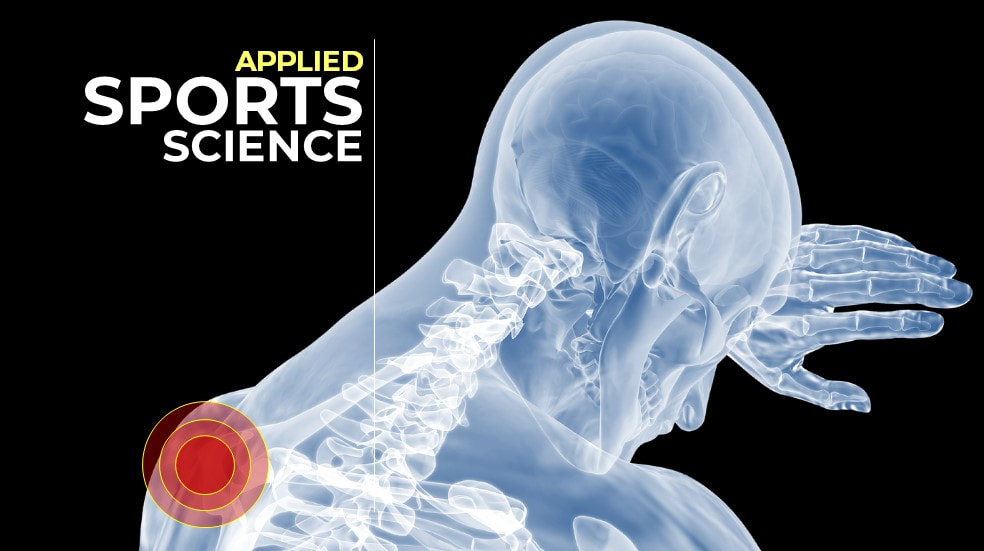|
The most common shoulder injury in swimmers is subacromial impingement (known as ‘Swimmers Shoulder’). Such impingement occurs when the tendons of the rotator cuff catch and rub against the nearby humorous bone in the upper arm. The pain experienced during any swimming stroke is a direct product of this ‘catching’ and can be exacerbated as you perform hundred and hundreds of swimming strokes during your workout. Three out of the four strokes in swimming are predominantly powered by the upper body, and the shoulder works hard when we propel though the water. Causes Swimming puts the shoulder joint through a large range of movement. Even though such movement is relatively low impact as exercise goes, the sheer number of rotations of the shoulder joint has the potential to irritate the shoulder if the swimmer is not performing their stroke technique correctly. In fact, all Strictly Swimming London coaches will teach our clients the correct swimming technique with this in mind and create better swimming technique to avoid such issues. Please be aware that using a kick board or swimming hand paddles can further exacerbate ‘swimmer’s shoulder’. Although classed as a ball and socket joint, the shoulder has a very shallow socket compared to the hip joint. Even though a healthy shoulder of a swimmer should have no problems going through a full range of motion without any issues in the swimming stroke, the small size of the socket allows for this impingement and can lead to swimmer’s shoulder if recurring issues in the stroke are not corrected. Shoulder impingement in the competitive swimmer is mostly caused by altered kinetics (movement and technique) due to muscle fatigue after hours and hours in the swimming pool. Strictly Swimming London coaches know this feeling only too well. Excessive training without adequate rest can cause swimmer’s shoulder. Symptoms Symptoms of subacromial impingement can be sudden or gradual and can be different from individual to individual. A decrease in some movement may be experienced but the shoulder will still be easy to move and won’t be stiff (like a frozen shoulder). Symptoms can include:
Swimmer’s Shoulder Test There is a very simple arc test to check if your shoulder pain is due to subacromial impingement. Stand with both arms by your side, then lift the arm out to the side all the way above your head. If you feel pain around 40 to 60 degrees after raising the arm to the side, and then for the pain to disappear at 120 degrees then you can bet its due to impingement. When performing this test, the palm of the hand must always face towards the body which means the shoulder has to rotate half way through this lift of the arm to keep the palm facing inwards at all times. Contributing Problems in Freestyle Swimming Technique Incorrect swimming mechanics are the leading factor in creating shoulder problems. Some freestyle technique problems leading to impingement include:
Our Strictly Swimming London coaches will aim to identify the exact part of the stroke where the pain occurs and will work on making adjustments in your technique during lessons. Diagnosis and Seeking Medical Advice Seeking medical advice is important if you are experiencing shoulder pain in your swimming training or lessons after a few weeks. If not treated appropriately, the rotator cuff tendons can start to thin and tear. X-rays and other imagining techniques may be needed to assess the changes in structure of the joint. The presence of ‘lazy elbow’ where the elbow on the affected side cannot be lifted to the normal height out of the water. Preventing and Managing Swimmer’s Shoulder There are numerous exercises you can search online for all of the following:
Treating Swimmer’s Shoulder
Summary Competitive swimmers are estimated to take well over a million arm strokes in just one year, and this repetitive motion puts swimmers higher at risk of developing shoulder pain. With a high likelihood of injury if you swim many hours per month, it is important to be aware of the ways to prevent this injury from occurring and what to do if it does happen to you. The easiest and possibly most effective treatment is rest. Take time off from swimming to allow the inflammation to reduce before returning to the pool. While resting, it is important to use ice to aid in decreasing inflammation of the tendons in the shoulder. And anti-inflammatory pain killers. You can also decrease the amount of overhead movements of the arm and stop any movement that brings on the pain. It is also vital to modify your stroke mechanics in the swimming pool to emphasize correct technique with each stroke to eliminate the element that is causing the pain. Our Strictly Swimming London coaches can show you all of the above in our private or group lessons and take a proper assessment of your problematic swimming stroke. Comments are closed.
|
AUTHORPaul started competing in swimming from the age of 8 and eventually went on to represent his country all over the world. During his time at University, Paul specialised in Aquatics and the Biomechanics of Swimming and produced numerous theses on swimming performance. TOPICS
All
ARCHIVES
June 2024
|
Let's connect!
Copyright © 2024 Strictly Swimming


